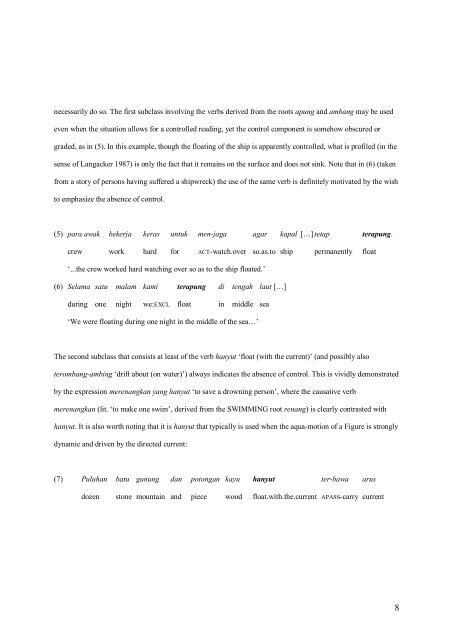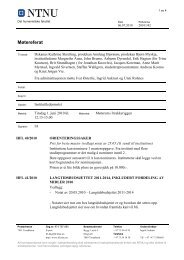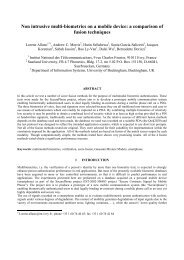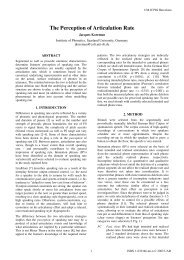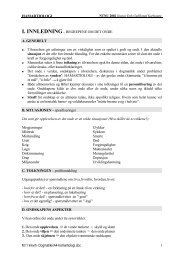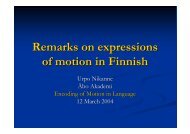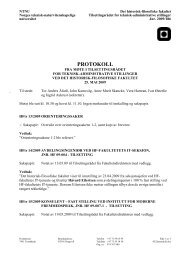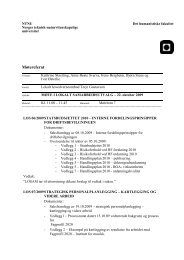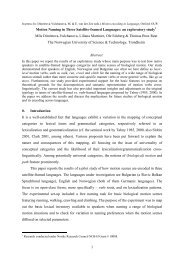Domains of aqua-motion: a case study in lexical typology Yury A ...
Domains of aqua-motion: a case study in lexical typology Yury A ...
Domains of aqua-motion: a case study in lexical typology Yury A ...
Create successful ePaper yourself
Turn your PDF publications into a flip-book with our unique Google optimized e-Paper software.
necessarily do so. The first subclass <strong>in</strong>volv<strong>in</strong>g the verbs derived from the roots apung and ambang may be used<br />
even when the situation allows for a controlled read<strong>in</strong>g, yet the control component is somehow obscured or<br />
graded, as <strong>in</strong> (5). In this example, though the float<strong>in</strong>g <strong>of</strong> the ship is apparently controlled, what is pr<strong>of</strong>iled (<strong>in</strong> the<br />
sense <strong>of</strong> Langacker 1987) is only the fact that it rema<strong>in</strong>s on the surface and does not s<strong>in</strong>k. Note that <strong>in</strong> (6) (taken<br />
from a story <strong>of</strong> persons hav<strong>in</strong>g suffered a shipwreck) the use <strong>of</strong> the same verb is def<strong>in</strong>itely motivated by the wish<br />
to emphasize the absence <strong>of</strong> control.<br />
(5) para awak bekerja keras untuk men-jaga agar kapal […] tetap terapung.<br />
crew work hard for ACT-watch.over so.as.to ship permanently float<br />
‘...the crew worked hard watch<strong>in</strong>g over so as to the ship floated.’<br />
(6) Selama satu malam kami terapung di tengah laut […]<br />
dur<strong>in</strong>g one night we:EXCL float <strong>in</strong> middle sea<br />
‘We were float<strong>in</strong>g dur<strong>in</strong>g one night <strong>in</strong> the middle <strong>of</strong> the sea…’<br />
The second subclass that consists at least <strong>of</strong> the verb hanyut ‘float (with the current)’ (and possibly also<br />
terombang-amb<strong>in</strong>g ‘drift about (on water)’) always <strong>in</strong>dicates the absence <strong>of</strong> control. This is vividly demonstrated<br />
by the expression merenangkan yang hanyut ‘to save a drown<strong>in</strong>g person’, where the causative verb<br />
merenangkan (lit. ‘to make one swim’, derived from the SWIMMING root renang) is clearly contrasted with<br />
hanyut. It is also worth not<strong>in</strong>g that it is hanyut that typically is used when the <strong>aqua</strong>-<strong>motion</strong> <strong>of</strong> a Figure is strongly<br />
dynamic and driven by the directed current:<br />
(7) Puluhan batu gunung dan potongan kayu hanyut ter-bawa arus<br />
dozen stone mounta<strong>in</strong> and piece wood float.with.the.current APASS-carry current<br />
8


